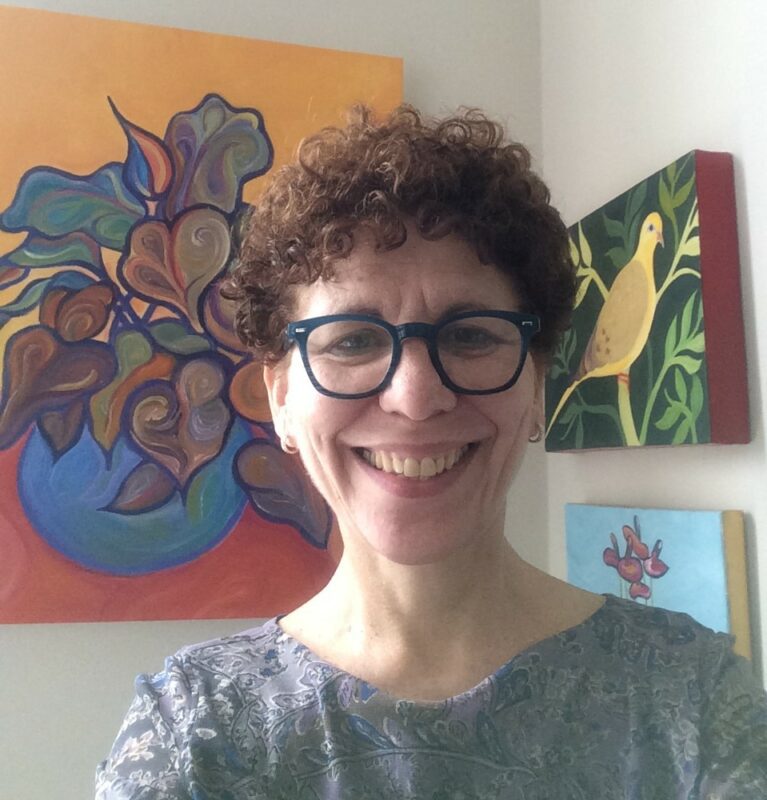
Dorothy Aronson never thought she would pursue a career in IT — or even a career at all.
She grew up in Philadelphia with a single mother and two brothers. As a child, Aronson envisioned she would become either a wife, a mother or a professional dancer. Nothing more.
“I didn’t grow up thinking of myself as a very smart, capable person,” says Aronson, currently the chief information officer of the National Science Foundation. “I just grew up thinking I would smile nicely.”
But when her older brother went to college, Aronson decided she, too, would pursue higher education.
In 1981, she graduated from Duke University with a bachelor’s degree in business. It was at Duke she learned about basic computer programming, the early developments of artificial intelligence and she grew a strong interest in IT.
After graduating, Aronson worked in the private sector as an accountant for a company in Delaware. Six months and numerous mathematical errors later, she was transferred internally to instead work as a mainframe computer programmer — armed with just basic knowledge about IT.
Aronson credits this role and working in the private sector for teaching her about computers. But being one of very few female computer programmers at the company and in the field of IT at the time was challenging, she recalls. Admittedly, she never was certain if she earned a promotion based on her actual qualifications or her gender.
Aronson later left the company and moved back to Philadelphia to work in IT at a bank, at the time when ATMs were just emerging. She and her then-fiancé soon moved to Washington, D.C., so he could advance his career in intelligence while Aronson found jobs in government contracting and serving the government internally.
While advancing her career, however, Aronson says she experienced resistance because of her gender and she knew she earned less than her male colleagues. Nevertheless, she has always seen being a woman as an advantage — professionally and personally.
“All along the way, I had been met with resistance because of my sex or confusion because of my sex,” Aronson recalls. “It worked against me as much as it worked for me.”
She also never considered a female mentor because of the dearth of women IT leaders.
“I grew up in a men’s world and did not understand the value of interacting with women,” Aronson says.
At this point in her life, Aronson had gotten married, had two daughters, became a single mother and then remarried. At 47, she became a member of the Senior Executive Service. She was set to become a permanent SES when she and her male boss had an ethical disagreement. It ultimately led to Aronson taking a demotion, and in 2006, she became the NSF CIO.
Coming to work for NSF 12 years ago was the first time Aronson had a female supervisor. It was also the first time she felt she was sure of who she was, professionally and personally.
“It was at that point that the clouds parted and the sky became blue for me because for the first time in my life, I was working for a woman,” Aronson says. “She was not an easy woman to work for, but it was the first time that I felt like I was sure of who I was and that she and I directly communicated.”
When she began at NSF, Aronson remembers there being very little central management of IT. In fact, the first federal mandates were issued to lock down and configure federal desktop computers.
Needless to say, Aronson has been up to the challenge and over the course of her career has seen federal IT change in the same way as technology in the private sector — rapidly and with more innovation than ever before.
It’s this opportunity to go beyond NSF’s central IT organization and gather ideas from people throughout and outside the agency Aronson sees as her greatest success of her career.
“Federal IT is changing,” she says. “All the places I’ve worked for have been progressive in the use of technology and so it just evolves as new technologies become available and we adopt them. What’s exciting to me is talking to people about what they want their [IT] future to be like.”
Now, Aronson’s responsibilities are threefold and share a common goal of empowering the end customer. Specifically, she focuses on governance (planning the IT budget, making sure investments are correctly placed and accounting for the needs of everyone in the organization, etc.), ensuring the needs of the entire IT NSF workforce are appropriately and efficiently met, and encouraging and overseeing technological innovation. In addition to being CIO, Aronson was recently named NSF’s chief data officer and oversees building data strategy and ensuring data privacy across the organization.
Aronson says she believes the current administration’s focus on technology, data and the IT workforce are on point and a nonpartisan issue. There’s also been great cross-fertilization and collaboration with federal CIOs from all organizations in this administration, she says.
In the future of IT, Aronson says she hopes for robotic process automation and other tools to become like Excel so individuals rely less on the central IT organizations to provide custom-developed features.
Though the evolution of IT and technology is exciting, Aronson explains changing the culture surrounding IT and technology at NSF has been her greatest, and most rewarding, challenge.
“I’m here to serve the mission of the agency and the federal mission, and I’m here to serve each customer,” she says. “So, if I leave any customer’s office and they’re unhappy, then I haven’t succeeded.”

